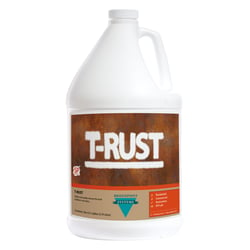Rust results from the reaction of iron oxide, oxygen, or water (including humidity). The best rust removers work differently on soft surfaces by molecular modification. This is the act of changing the rust so it is no longer visible.
.jpg?width=600&name=My%20Post%20Copy%20(8).jpg)
It requires no neutralizing only rinsing.
- Identifying the source: work with the customer to identify how the stain came about and address any conditions that need to be changed to prevent the rust from re-occurring.
- Extract from the carpet: remove as much of the staining material that is not bonded to the fiber. This extraction process also serves to rinse out residues of other spotters that may have been used.
- Follow the extraction with numerous dry strokes: we do not want much water left in the fiber to dilute the strength of the spotter.
- For carpets: pretest in an inconspicuous place for suitability of rust remover. Rust sticks to the surface of polyester carpet while rust permeates into nylon fibers This results in easier removal from polyester than nylon carpet.
- Apply to the stained area: and lightly agitate to spread rust remover throughout the stained area.
- Give enough dwell time: for the rust remover to chemically interact with rust resulting in its disappearance.
- Repeat as necessary.
- Extract again: Follow up with another extraction and several dry strokes to remove the residues from the rust remover.
Wool carpet demands special attention, experience, and patience as the strength of the rust remover needs to be tested in an inconspicuous area.
Featured Products

Bridgepoint Systems Stain Remover T-Rust Rust Remover, 1 Gallon
